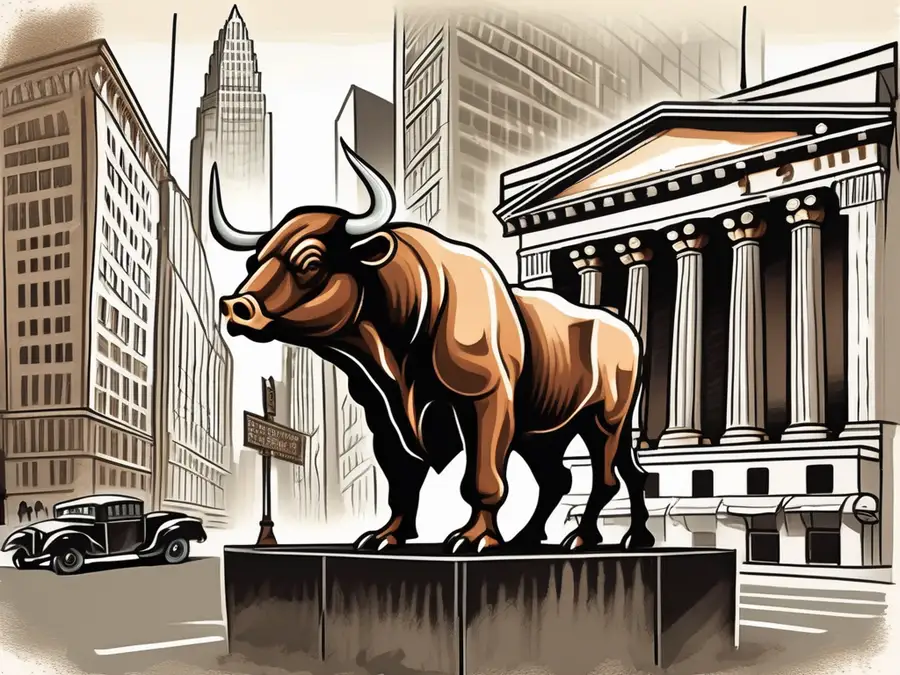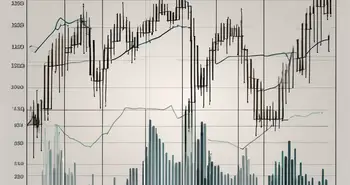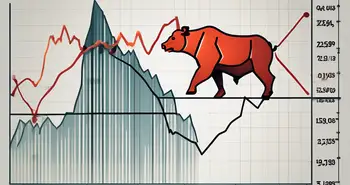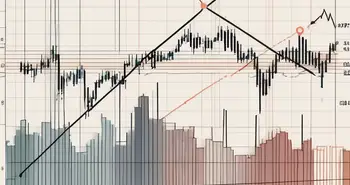From Origins to Modern Day: The Fascinating History of Wall Street

As an expert on the fascinating history of Wall Street, I am thrilled to delve into the origins and evolution of this iconic financial district. From its humble beginnings to becoming a global symbol of wealth and power, Wall Street has played a vital role in shaping the financial landscape of the United States and the world.
The Birth of Wall Street
The Dutch Origins
Before Wall Street became synonymous with high finance, it had a humble start as a street in lower Manhattan. In the 17th century, the area was initially settled by the Dutch and was known as New Amsterdam. This Dutch settlement consisted of a wall to protect the colonists from British and Native American attacks. This wall lent its name to the street we now know as Wall Street.
In the early days, Wall Street was primarily a residential area. However, as time went on, it transformed into a bustling center for commerce, attracting traders and merchants from all over.
As the Dutch influence waned and the British took control of the area, Wall Street began to evolve into a hub of economic activity. The street became a melting pot of cultures and languages, with goods from around the world being bought and sold in the bustling markets that lined the thoroughfare.
Wall Street in the 18th Century
The 18th century marked a turning point for Wall Street. In 1792, a group of 24 merchants and traders gathered beneath a buttonwood tree on Wall Street to sign an agreement that would create what is now known as the New York Stock Exchange. This historic moment laid the foundation for the financial powerhouse that Wall Street would become.
During this period, Wall Street saw rapid growth as the nation expanded. It became the epicenter of trade, with brokers and merchants conducting business in coffeehouses and on the street itself.
The bustling activity on Wall Street attracted not only traders and merchants but also artisans, craftsmen, and other professionals looking to capitalize on the growing economy. The street became a symbol of opportunity and prosperity, drawing ambitious individuals from far and wide to seek their fortunes in the burgeoning financial district.
Wall Street in the 19th Century
The First Stock Exchange
With the establishment of the New York Stock Exchange, Wall Street solidified its status as the financial hub of the United States. As the nation's economy boomed, businesses eagerly sought capital to fuel their growth. This led to an increase in stock trading, with Wall Street at the center of these transactions.
During this time, Wall Street underwent significant changes, including the construction of the first stock exchange building and the introduction of telegraph lines that facilitated faster communication between investors and brokers.
The New York Stock Exchange, founded in 1792, was originally located on Wall Street under a buttonwood tree. This historic agreement, known as the Buttonwood Agreement, marked the birth of formalized trading in the United States. As trading volumes increased, the need for a dedicated trading space became apparent, leading to the construction of the first stock exchange building on Wall Street in the early 19th century. This iconic building not only housed the trading floor but also became a symbol of Wall Street's growing influence in the financial world.
The Gold Rush Impact
In the mid-19th century, the California Gold Rush had a profound impact on Wall Street. As news of gold discoveries spread, investors flocked to Wall Street, hoping to capitalize on the booming mining industry. This influx of money and speculation further fueled the expansion and influence of Wall Street.
The California Gold Rush, which began in 1848, triggered a massive migration of people seeking their fortunes in gold mining. This sudden surge in population and economic activity created a ripple effect that reached Wall Street. Investors keen on profiting from the gold rush poured money into mining companies, leading to a surge in stock prices and trading volumes on Wall Street. The excitement and optimism surrounding the gold rush not only shaped the financial landscape of Wall Street but also contributed to the growth of other industries that supported the mining boom.
The Wall Street Crash and The Great Depression
The Roaring Twenties
The 1920s, often referred to as the “Roaring Twenties,” were a time of unprecedented economic growth in the United States. Wall Street experienced a period of immense prosperity, with a booming stock market and lavish spending.
Financial markets were fueled by speculative investing and excessive borrowing. However, this era of excess came to a crashing halt when the stock market collapsed on Black Tuesday, October 29, 1929. This cataclysmic event marked the beginning of the Great Depression.
Black Tuesday: The Day the Market Crashed
Black Tuesday sent shockwaves throughout Wall Street and the entire nation. Prices of stocks plummeted, wiping out fortunes and leading to widespread panic. The crash reverberated across all sectors of the economy, triggering a decade-long economic downturn that affected millions of people.
The aftermath of Black Tuesday was devastating. Banks failed, businesses closed, and unemployment soared. Families lost their life savings, homes were foreclosed, and breadlines became a common sight in cities across America. The once bustling streets of urban centers turned into scenes of desperation and destitution, as the nation grappled with the harsh realities of the economic collapse.
The Dust Bowl and Migrant Workers
As if the financial crisis wasn't enough, the 1930s also saw the onset of the Dust Bowl, a period of severe dust storms that ravaged the Great Plains. The combination of economic hardship and environmental disaster forced many farmers to abandon their land in search of work elsewhere. This led to a mass exodus of migrant workers, traveling in search of employment opportunities and a chance for a better life.
Wall Street During World War II
Financing the War Effort
During World War II, Wall Street played a crucial role in financing the war effort. The U.S. government relied on the financial expertise of Wall Street to raise funds through the sale of war bonds. These investments allowed citizens to contribute to the war effort while also providing a return on investment.
It's important to note that the collaboration between Wall Street and the government during this time was not without controversy. Some critics argued that the close relationship between big business and the military-industrial complex led to unethical practices and inflated profits. However, proponents of the partnership pointed to the necessity of funding the war and the overall positive impact on the economy.
Post-War Wall Street
After the war, Wall Street played a significant role in the post-war economic boom. It became a beacon of hope and prosperity, attracting investors from around the world. The stock market experienced robust growth, and Wall Street solidified itself as the heart of global capitalism.
This period also marked the beginning of a shift towards a more consumer-driven economy, as returning soldiers fueled demand for goods and services. Wall Street adapted to this changing landscape by financing industries that catered to the needs and desires of the American public. The post-war era saw the rise of consumer culture, with Wall Street playing a key role in shaping and supporting this economic transformation.
Wall Street in the Modern Era
The Rise of Technology and Wall Street
The late 20th century and early 21st century brought about a new era for Wall Street with the rise of technology. The advent of computers and the internet revolutionized financial markets, leading to the emergence of electronic trading.
Today, Wall Street is a complex ecosystem of banks, investment firms, and traders who rely on cutting-edge technology to execute trades at lightning speed. The speed and efficiency of modern Wall Street are unparalleled, reflecting the ever-evolving landscape of the financial industry.
Wall Street and the Global Economy
Wall Street's influence extends far beyond the borders of the United States. Its actions have a significant impact on the global economy, affecting markets and investors worldwide. The decisions made on Wall Street can have far-reaching consequences, shaping the economic landscape not just in America but across the globe.
Throughout history, Wall Street has experienced both triumphs and setbacks, but its resilience and adaptability have allowed it to continually reinvent itself. It remains an emblem of capitalism and a driving force in the world of finance.
As someone deeply immersed in the world of finance, I have witnessed the power and allure of Wall Street firsthand. It's a place where fortunes are made and lost, where dreams are realized and shattered. The history of Wall Street is not just a timeline of events; it's a testament to the indomitable spirit of human ambition and the pursuit of wealth and success.
As you've seen, Wall Street's history is rich with innovation and transformation, mirroring the evolution of the financial markets themselves. If you're inspired by this legacy and ready to be part of the next chapter in trading history, look no further than Morpher. Embrace the future with a platform that offers zero fees, infinite liquidity, and the freedom to trade across multiple asset classes. Whether you're interested in stocks, cryptocurrencies, or even niche markets like NFTs, Morpher's revolutionary blockchain technology provides a seamless and secure trading experience. Sign Up and Get Your Free Sign Up Bonus today to start trading with the innovation and spirit that has always driven Wall Street forward.

Disclaimer: All investments involve risk, and the past performance of a security, industry, sector, market, financial product, trading strategy, or individual’s trading does not guarantee future results or returns. Investors are fully responsible for any investment decisions they make. Such decisions should be based solely on an evaluation of their financial circumstances, investment objectives, risk tolerance, and liquidity needs. This post does not constitute investment advice.

Painless trading for everyone
Hundreds of markets all in one place - Apple, Bitcoin, Gold, Watches, NFTs, Sneakers and so much more.

Painless trading for everyone
Hundreds of markets all in one place - Apple, Bitcoin, Gold, Watches, NFTs, Sneakers and so much more.









